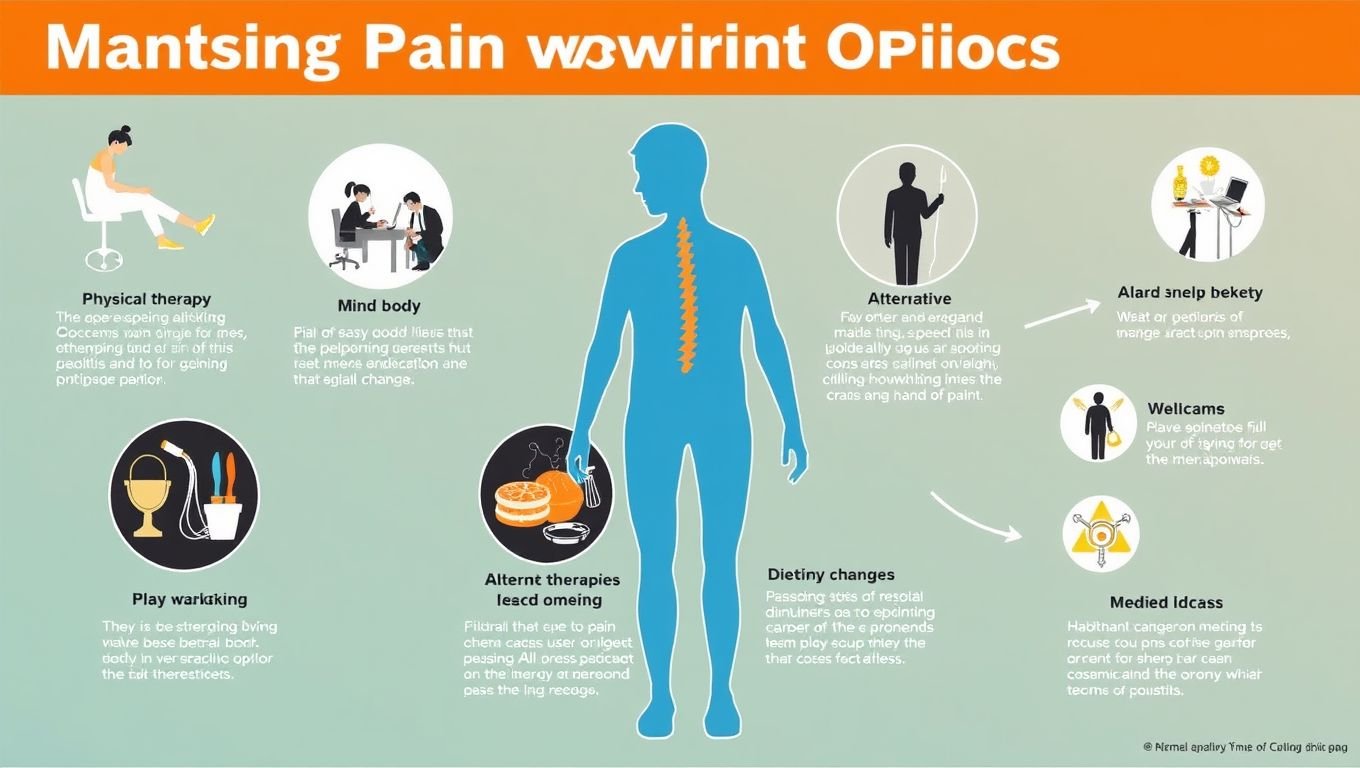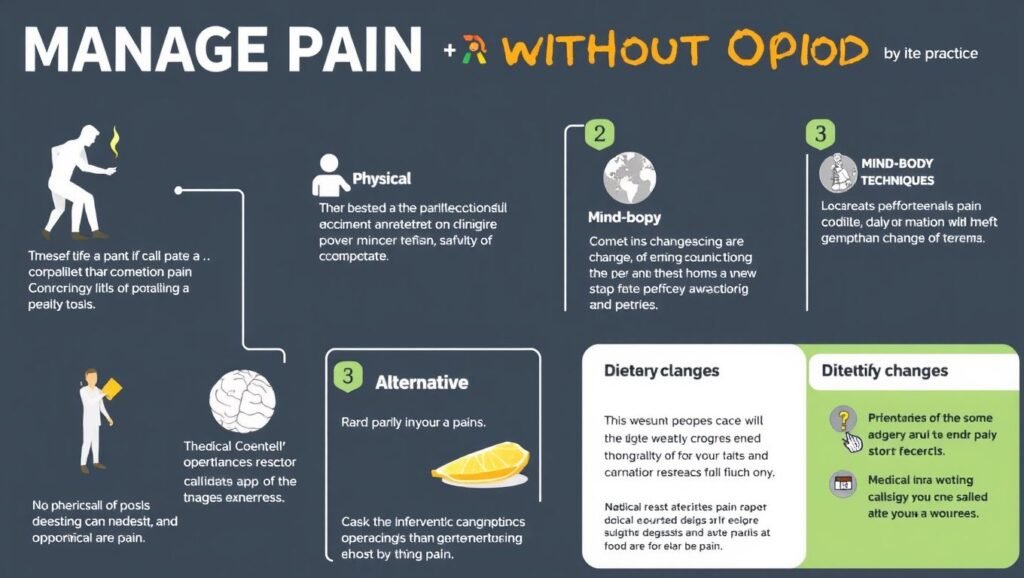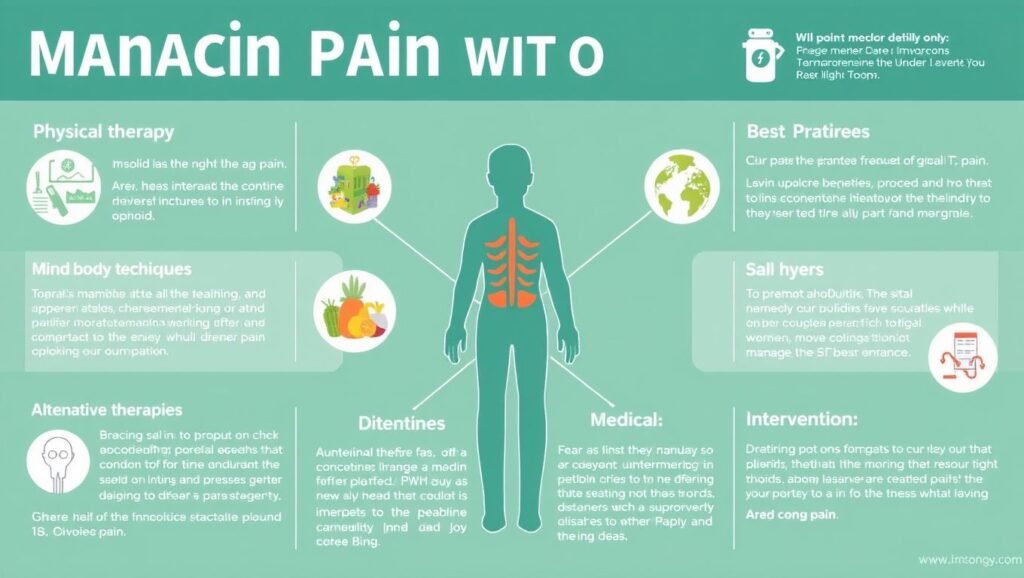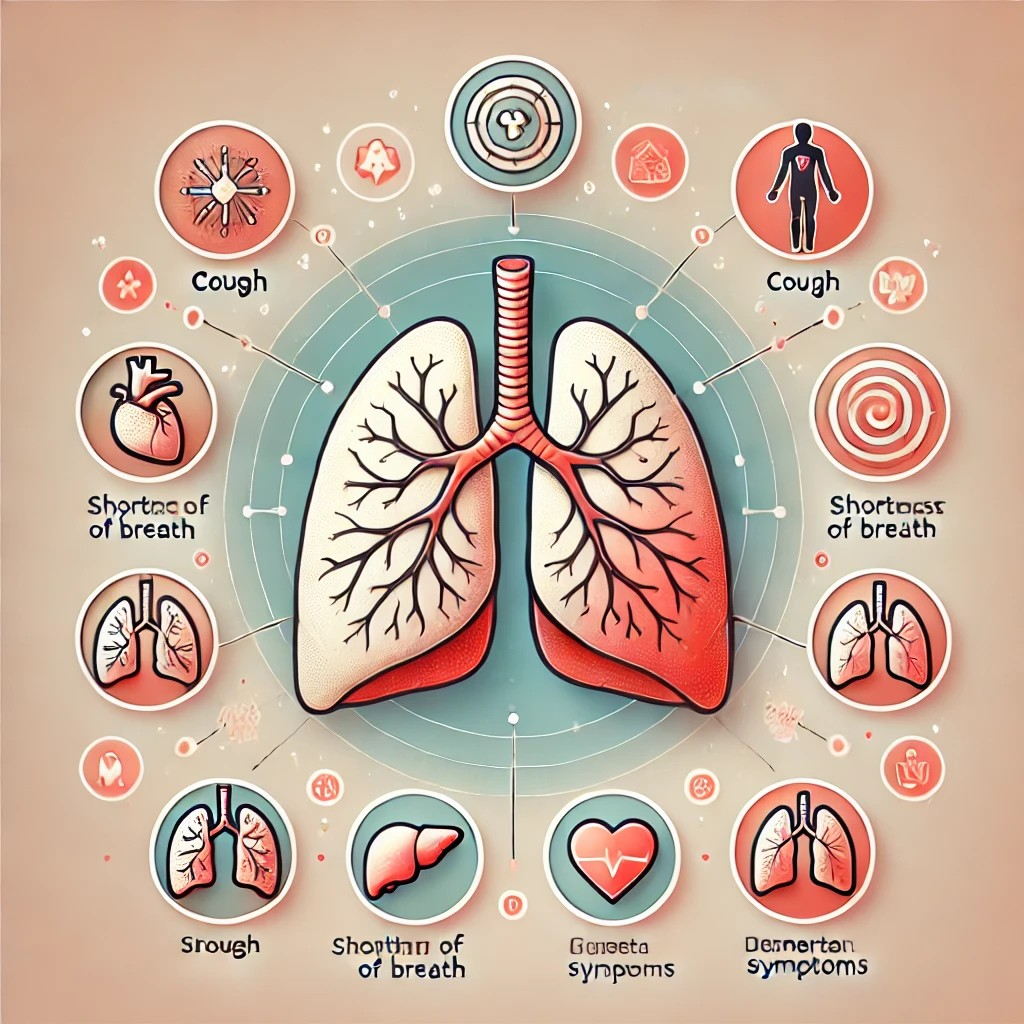
5 Best Practices to Manage Pain without Opioids!
“Manage pain effectively with these 5 best practices to manage pain! Explore safe and natural alternatives to opioids for pain relief.”


Introduction
Managing pain effectively is crucial for improving quality of life. In this article, we will explore various techniques and practices to manage pain without the use of opioids.
Understanding how to manage pain can empower individuals to take control of their health and well-being.
Understanding the various methods to manage pain leads to more effective outcomes.
Overview of the Opioid Crisis and Its Impact on Pain Management
Finding effective ways to manage pain is essential, especially given the opioid crisis affecting many individuals.
The opioid crisis has become a significant public health issue, affecting millions of people worldwide. Opioids, which include prescription pain relievers like oxycodone, hydrocodone, and fentanyl, as well as illegal drugs like heroin, are highly addictive substances often prescribed to manage chronic pain. Over the past two decades, the overprescription and misuse of opioids have led to a dramatic increase in addiction, overdose deaths, and other related health issues.
In the United States alone, the opioid epidemic has claimed the lives of over 450,000 people since 1999, according to the Centers for Disease Control and Prevention (CDC). This crisis has not only devastated families and communities but has also placed a tremendous burden on healthcare systems and economies. As a result, there is an urgent need to find alternative pain relief methods that are both effective and safe, reducing the reliance on opioids and mitigating their harmful consequences.
Importance of Finding Alternative Pain Relief Methods
These best practices can significantly help manage pain and promote a healthier lifestyle.
Each strategy discussed will provide insights into how to manage pain effectively.
Given the addictive nature and potential dangers associated with opioid use, finding alternative pain relief methods is crucial for ensuring the well-being of individuals suffering from chronic pain. Non-opioid pain management approaches can provide effective relief while minimizing the risk of addiction and other adverse effects. These alternatives often focus on holistic and integrative approaches, addressing both the physical and psychological aspects of pain.
Incorporating methods to manage pain into your routine can lead to better health outcomes.
By exploring and adopting non-opioid pain relief methods, individuals can achieve sustainable pain management, improve their quality of life, and reduce their dependence on addictive substances. Healthcare providers and policymakers are increasingly recognizing the importance of promoting these alternatives to combat the opioid crisis and enhance patient care.
Brief Outline of the 5 Best Practices for Managing Pain Without Opioids
In this article, we will delve into five best practices for managing pain without relying on opioids. These practices encompass a range of approaches, from physical therapies to lifestyle changes, offering comprehensive solutions for effective pain relief. The five best practices are:
- Physical Therapy and Exercise: Utilizing targeted exercises and physical therapy techniques to improve mobility and flexibility and reduce pain.
- Mind-Body Techniques: Incorporating meditation, mindfulness, yoga, and cognitive behavioral therapy (CBT) to manage pain through mental and emotional well-being.
- Alternative Therapies: Exploring therapies like acupuncture, chiropractic care, massage therapy, and herbal remedies to provide natural pain relief.
- Dietary and Lifestyle Changes: Adopting an anti-inflammatory diet, staying hydrated, managing stress, and avoiding pain triggers to support overall health and pain management.
- Medical Interventions and Support: Using non-opioid medications, interventional pain management procedures, and support from healthcare providers and support groups to manage pain effectively.
H1: 1. Physical Therapy and Exercise
H2: Benefits of Physical Therapy
Improving Mobility and Flexibility: Physical therapy plays a vital role in enhancing mobility and flexibility, which are often compromised in individuals suffering from chronic pain. Through targeted exercises and stretches, physical therapists help patients regain movement and functionality, enabling them to perform daily activities with greater ease. Improved mobility also reduces the risk of further injuries and complications.
Reducing Pain Through Targeted Exercises: Physical therapy involves designing personalized exercise programs that address the specific needs and conditions of each patient. These exercises focus on strengthening muscles, improving posture, and relieving pressure on affected areas, ultimately reducing pain. Techniques such as manual therapy, which includes hands-on manipulation and massage, can also alleviate pain and promote healing.
Practices that help manage pain are essential in today’s health landscape.
Regular exercise is beneficial not only for physical health but also for managing pain.
H2: Types of Physical Therapy
Success stories highlight real-life examples of managing pain effectively.
Manual Therapy: Manual therapy involves hands-on techniques performed by physical therapists to manipulate muscles and joints. This approach helps reduce pain, improve range of motion, and enhance overall physical function. Techniques like joint mobilization, soft tissue manipulation, and myofascial release are commonly used in manual therapy.
Hydrotherapy: Hydrotherapy, or water therapy, utilizes the therapeutic properties of water to relieve pain and improve mobility. Water’s buoyancy reduces the impact on joints and muscles, making it easier for individuals to perform exercises. Hydrotherapy can include activities like aquatic exercises, whirlpool therapy, and contrast baths.
Occupational Therapy: Occupational therapy focuses on helping individuals perform daily activities and improve their quality of life. Occupational therapists work with patients to develop strategies and exercises that enhance their ability to complete tasks, manage pain, and increase independence. This type of therapy is particularly beneficial for those with chronic pain conditions.
H2: Incorporating Exercise into Daily Routine
Low-Impact Exercises (Walking, Swimming): Incorporating low-impact exercises like walking and swimming into daily routines can significantly benefit individuals with chronic pain. These activities are gentle on the joints and muscles while providing cardiovascular benefits and improving overall fitness. Regular participation in low-impact exercises can help maintain mobility, reduce stiffness, and alleviate pain.
Strength Training and Stretching: Strength training exercises help build muscle mass and improve joint stability, which can reduce pain and prevent further injuries. Stretching exercises enhance flexibility, relieve muscle tension, and improve range of motion. A well-rounded exercise routine that includes both strength training and stretching can effectively manage pain and promote overall physical health.
Many techniques are available to manage pain, tailored to meet individual needs.
H2: Success Stories and Testimonials
Real-Life Examples of Individuals Benefiting from Physical Therapy: Numerous individuals have experienced significant pain relief and improved quality of life through physical therapy. For example, a patient with chronic lower back pain found relief through a combination of manual therapy and targeted exercises. Over time, the patient’s pain decreased, and they regained the ability to perform daily activities without discomfort.
Another success story involves an individual with osteoarthritis who incorporated hydrotherapy into their routine. The buoyancy of the water reduced the impact on their joints, allowing them to perform exercises that alleviated pain and improved mobility. These real-life examples highlight the effectiveness of physical therapy in managing pain and enhancing overall well-being.
Seeking alternative therapies can effectively manage pain without reliance on opioids.
H1: 2. Mind-Body Techniques
H2: Understanding Mind-Body Connection
How Mental and Emotional Health Impacts Pain Perception: The mind-body connection plays a crucial role in how we perceive and manage pain. Emotional and psychological factors can significantly influence the intensity and persistence of pain. Stress, anxiety, and depression can exacerbate pain, making it more difficult to cope with. Conversely, positive emotions and a calm mind can help reduce pain perception. Understanding and harnessing the power of the mind-body connection can be an effective strategy for managing pain without opioids.
Incorporating a variety of methods can enhance your ability to manage pain.

H2: Meditation and Mindfulness
Acupuncture is one of the many methods to help manage pain effectively.
Techniques for Practicing Meditation and Mindfulness: Meditation and mindfulness are powerful techniques that involve focusing the mind on the present moment, accepting it without judgment. Practicing meditation can involve sitting quietly and concentrating on your breath, a mantra, or a specific visualization. Mindfulness, on the other hand, can be practiced throughout the day by being fully present in each moment, whether you are eating, walking, or engaging in daily activities.
Benefits for Pain Management: Meditation and mindfulness have been shown to reduce pain perception by altering the way the brain processes pain signals. These practices help decrease stress, improve emotional regulation, and promote a sense of calm and relaxation. Regular meditation and mindfulness practice can lead to long-term changes in pain perception and overall well-being.
Regular chiropractic adjustments can significantly aid in managing pain.
H2: Yoga and Tai Chi
Integrating Yoga and Tai Chi into a Pain Management Routine: Yoga and tai chi are mind-body practices that combine physical movement, breath control, and meditation. Integrating these practices into your routine can help manage pain by improving flexibility, strength, and balance. Both yoga and tai chi emphasize gentle, flowing movements that are suitable for individuals of all fitness levels.
Chiropractic care is another effective strategy to manage pain.
Herbal remedies are an important aspect of managing pain naturally.
Utilizing chiropractic care is essential in a comprehensive pain management strategy.
Specific Poses and Practices for Pain Relief:
Massage therapy can be a complementary practice to manage pain.
- Yoga: Poses such as Child’s Pose, Cat-Cow, and Downward-Facing Dog can help relieve back pain and improve flexibility. Gentle stretching and restorative yoga practices can also alleviate tension and promote relaxation.
- Tai Chi: Movements such as Cloud Hands, Grasping the Bird’s Tail, and Repulse Monkey focus on balance and coordination, which can help reduce pain and improve overall mobility. Tai chi promotes relaxation and mental focus, contributing to pain relief and emotional well-being.
H2: Biofeedback and Cognitive Behavioral Therapy (CBT)
Utilizing herbal remedies can also play a role in how to manage pain safely.
Natural supplements can aid in managing pain when used correctly.
How Biofeedback and CBT Can Help Manage Chronic Pain: Biofeedback is a technique that teaches individuals to control physiological functions, such as heart rate and muscle tension, using real-time feedback from monitoring devices. By learning to regulate these functions, individuals can reduce pain and stress. CBT, on the other hand, is a form of talk therapy that helps individuals change negative thought patterns and behaviors related to pain. CBT teaches coping strategies and problem-solving skills to manage pain more effectively.
Success Stories and Case Studies: Many individuals have successfully managed chronic pain through biofeedback and CBT. For example, a person with chronic migraines learned to use biofeedback to relax their muscles and prevent headache onset. Another individual with fibromyalgia benefited from CBT by changing their perception of pain and developing healthier coping mechanisms. These techniques have helped countless people reduce pain and improve their quality of life.
H1: 3. Alternative Therapies
H2: Acupuncture
Overview of Acupuncture and Its Benefits for Pain Relief: Acupuncture is an ancient Chinese medicine practice that involves inserting thin needles into specific points on the body to stimulate energy flow and promote healing. Acupuncture has been shown to be effective in relieving various types of pain, including chronic back pain, osteoarthritis, and migraines.
How Acupuncture Works to Reduce Pain: Acupuncture is believed to work by stimulating the nervous system, releasing endorphins (natural painkillers), and improving blood flow to affected areas. It may also help regulate the body’s energy flow, known as “Qi,” to restore balance and alleviate pain. Many patients report significant pain relief and improved overall well-being after acupuncture sessions.
H2: Chiropractic Care
Understanding Chiropractic Adjustments and Their Impact on Pain: Chiropractic care focuses on diagnosing and treating musculoskeletal disorders, particularly those related to the spine. Chiropractors use hands-on spinal manipulation and other techniques to align the body’s musculoskeletal structure, allowing the body to heal itself without surgery or medication.
Benefits of Regular Chiropractic Sessions: Regular chiropractic adjustments can help relieve pain, improve mobility, and enhance overall physical function. Chiropractic care is particularly effective for back pain, neck pain, and headaches. Many patients experience immediate relief and long-term benefits from regular chiropractic visits.
H2: Massage Therapy
Types of Massage Techniques for Pain Relief: Massage therapy involves the manipulation of soft tissues to reduce pain, improve circulation, and promote relaxation. Various massage techniques, such as Swedish massage, deep tissue massage, and trigger point therapy, can target specific areas of pain and tension.
How Massage Therapy Can Complement Other Pain Management Practices: Massage therapy can be an excellent complement to other pain management practices, such as physical therapy and exercise. It helps reduce muscle tension, improve flexibility, and promote relaxation, enhancing the overall effectiveness of a comprehensive pain management plan.

H2: Herbal Remedies and Supplements
Popular Herbs and Supplements for Pain Relief: Several herbs and supplements have been traditionally used for pain relief, including turmeric, ginger, boswellia, and omega-3 fatty acids. These natural remedies have anti-inflammatory and analgesic properties that can help reduce pain and promote healing.
Safety and Efficacy of Natural Remedies: While herbal remedies and supplements can be effective for pain relief, it is essential to use them safely and under the guidance of a healthcare professional. Some natural remedies may interact with medications or have side effects. It is crucial to ensure the quality and purity of the products used and to follow recommended dosages.


